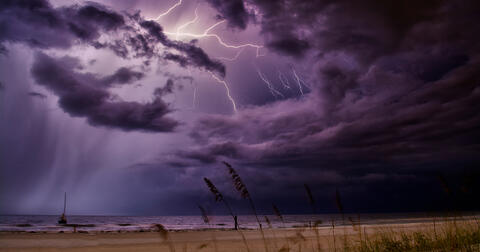Extreme weather patterns are not new
Michigan’s health department appears to ignore historical data
First there was “global warming,” and then there was “climate change.” But a new term is gaining currency, and it is “global weirding,” which in the words of one professor at Northeastern University, refers to extreme weather events. New York Times columnist Thomas Friedman popularized the term in a 2020 opinion piece, writing, “The hots are expected to get hotter, the wets wetter, the dries drier and the most violent storms more numerous.” When it comes to Michigan, says the National Oceanic and Atmospheric Administration, Michigan’s wildest temperatures happened almost 100 year ago.
NBC News used hot weather and wild fires in California and 60-degree weather and mosquitoes in Washington, D.C. in December as examples of global weirding. But The Mercury News of San Jose reported in 2014 that the area now known as California once had a 240-year drought and, 50 years later, another drought of 180 years. On the other side of the continent, Washington, D.C., experienced its coldest weather on Jan. 1, 1881, when the temperature reached 14 below zero, according to Extreme Weather Watch.
The Michigan Department of Health and Human Services appears to endorse the view of global weirding. It says that changes in the world are “leading to shifting seasonal patterns and more extreme events. Current climate forecasts show extreme weather patterns will increase through the 21st Century.” The National Oceanic and Atmospheric Administration that the highest recorded temperature in Michigan was 112 degrees, reached in 1936. The coldest temperature recorded was 51 below zero, recorded in 1934.
Jason Hayes is the environmental policy director at the Mackinac Center for Public Policy. He takes a more sanguine look than some at recent weather observations.
“As with many other environmental issues, NOAA’s extreme temperature database demonstrates that cycles are normal in the natural world. Michigan’s minimum temperature record was set in 1934 and, only two years later, the maximum temperature record was set. We recently saw a similar issue in 2020, when media reports of rising water levels in the Great Lakes struck fear into the hearts of readers, but they didn’t bother to report that water levels in the lakes were just as high or higher in 1860, 1876, 1886, 1952, 1973, 1974, and 1986.”
Hayes continued: “Current headlines scream that the temperatures we’re experiencing in Michigan are unprecedented or dangerous. But the data show that we have seen extreme temperatures and extreme temperature swings in the past, and well before people were driving SUVs. Recognizing the fact that cycles are normal, it’s time for scientists and science to return their focus to data and to stop treating models as more real than reality.”
Michigan Capitol Confidential is the news source produced by the Mackinac Center for Public Policy. Michigan Capitol Confidential reports with a free-market news perspective.


Jobs agency ghost-writes its own public relations